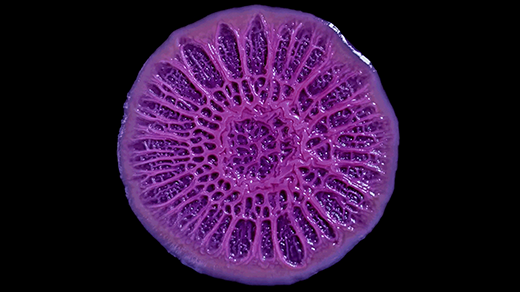New Insights Into How Zika Harms the Brain

When Brazil’s alarming spike in newborns with brain damage was linked to an obscure virus last year, Arnold Kriegstein began to do some reading. Kriegstein, a neurobiologist at the University of California, San Francisco, learned that the Zika virus is named after the forest in Uganda where it was first discovered in 1947. Spread by mosquitoes, it causes fairly mild symptoms — a rash, inflamed eyes, muscle aches, a fever. But in late 2015, months after it appeared in Brazil, babies there began to be born with microcephaly, an underdeveloped brain, in surprisingly large numbers. In April 2016, the U.S. Centers for Disease Control and Prevention issued a statement: There was now enough evidence — especially the presence of the virus in the brains of stillborn infants — to suggest that Zika was the cause. But scientists knew next to nothing about how a virus could infect fetal brain cells and inhibit brain growth.
As Kriegstein read, he came across something that made him stop short. A 2015 paper revealed that the virus needed the presence of a receptor called AXL to infect certain cells. His lab had been studying stem cells found inside the developing brain, and he knew that AXL receptors coated these cells in a thick carpet. The receptor was also present in a limited number of other cells, including ones that make up the blood vessels heading into the brain and neural support cells like astrocytes and glia. “As soon we saw it, we were struck,” he said. They felt sure this was how the virus was getting in.
Now, in a paper available as a preprint before peer review*, Kriegstein’s lab and two others at UCSF describe experiments using human tissue that suggest the AXL receptor is at least part of how Zika manages to infect neural stem cells. They also investigated whether certain drugs could keep the virus from replicating in infected cells, detailing promising early results of a common, pregnancy-safe antibiotic called azithromycin.
These are just some of the findings pouring out of dozens, if not hundreds, of collaborations focused on the virus and its effects. This spring and summer, study results have converged on the fact that neural stem cells — cells that will eventually develop into neurons and other cell types — are susceptible to Zika infection, while mature neurons are not so vulnerable. Other findings focus on what exactly Zika is doing once it gets inside those cells, where it seems to be keeping the cells from growing, dividing and developing. Another pressing question is how the placenta, a tissue with such a remarkable ability to withstand infection that only a small number of pathogens are known to cross from the mother to the fetus, lets Zika through. And why do some babies born to Zika-infected mothers suffer from microcephaly, others from retinal deformities, while others have no apparent damage? Questions abound; answers are only beginning to take shape.
How Zika Breaks In
Amid the flood of urgent research on the Zika virus, the new work from the Kriegstein lab and their collaborators at UCSF — the labs of Susan Fisher, a placental biologist, and Joseph DeRisi, a biochemist — is remarkable because they used difficult-to-obtain brain slices from fetuses and placentas from first- and second-trimester pregnancies. These tissues represent the primary battleground between the virus and the fetal host, as mothers infected early on in pregnancy seem most at risk of birth defects. To see what might be happening, the teams exposed their samples to the virus for 24 hours and then added a fluorescent tag that attaches to it.
In the case of the placenta, the primary question was whether cells there would pick up the virus. Carolyn Coyne, a virologist at the University of Pittsburgh, and her team recently found that late-stage placentas can withstand Zika infection. But earlier tissues, from the time when infections seem to do the most harm, were an open question. In the UCSF team’s samples from the first and second trimester, the virus appeared clearly within placental cells, indicating that at least under these conditions they are vulnerable to Zika. And in an interesting turn, first-trimester cells were more likely to be infected than those from the second trimester. The AXL receptor, Kriegstein notes, is more common on such cells earlier in pregnancy.
In the brain slices, the teams looked to see which types of cells had picked up the virus and whether they were known to have AXL. The virus had gotten into neural stem cells in several different areas of the brain, which fit with what the researchers expected. They also saw a handful of infected neurons, which they think might have descended from infected stem cells. Perhaps most interestingly, the virus was all over cells known as astrocytes, which do everything from guiding neurons’ growth to ushering nutrients around the brain. “They were just blazing with viral particles overnight,” Kriegstein said. The group added a molecule that blocked AXL receptors to dishes of astrocytes, to see whether that would keep the virus out, and found that it did.
The findings support the idea that the Zika virus requires the AXL receptor to infiltrate cells of all kinds. They might also help explain some of the more perplexing brain damage it causes. Small, underdeveloped brains might easily be laid at the doorstep of destroyed neural stem cells: Fewer stem cells means fewer neurons and smaller brains. But some infants also have thick plaques of hardened brain tissue in unexpected places. Kriegstein suggests that in these areas, large numbers of infected astrocytes may have caused the death of mature neurons. “If astrocytes are packed with viruses and they rupture, and the virus is highly concentrated, that could cause the infection of neurons,” he said, even though those cells don’t seem to be very susceptible in lab models. Astrocytes are so closely entwined with neurons that their infection would cause serious problems for those cells, said Guo-li Ming, a neuroscientist at Johns Hopkins University, who found that astrocytes in lab models of the brain are vulnerable to Zika. “We have proposed this — there may be a bystander effect,” she said.
If AXL is part of how Zika manages to break in — and finding out just how the virus might be using the receptor is one thing to look for in future research — it’s almost certainly not the only factor. Dengue virus, which is related to Zika, uses the AXL receptor to enter cells, yet it is not known to cause birth defects. Zika might use other receptors as well. And the virus may require specific conditions to enter. The mother’s genes, the state of her immune system and perhaps even what infections she’s had before might all be playing a part, said Patricia Garcez of the Federal University of Rio de Janeiro, who studies the origins of microcephaly and has turned her attention to how Zika infects lab-grown cells. “There are many questions still,” she said.
The Race Toward Treatment
But even as biologists try to piece together Zika’s basic biology, they’re acutely aware of the pressing need for clinical treatments. Apart from their tests with human tissue, the UCSF group infected dish-grown cells with Zika and treated them with a selection of drugs. They found that reasonable concentrations of azithromycin, a commonly prescribed antibiotic that is not thought to be harmful during pregnancy, stopped viruses from multiplying. DeRisi, one of the senior authors on the new paper, notes that this is especially interesting because of how few drugs are known to be safe for pregnant women and their fetuses. “The chemical space we’re allowed to play in is crazy small,” he said.
DeRisi estimates that at least 20 groups are currently screening drugs to see if anything already known to be safe will keep the virus down. As with azithromycin, any promising leads that come out of that in the next few months will next need to be tested in animal models. Garcez and her collaborators found recently that the malaria drug chloroquine helps limit viral growth in cells. But unpublished tests of the drug in mice have tempered expectations.
It’s a reminder that much of what researchers are doing on Zika has far more unknowns attached to it than their usual work. People are working quickly — DeRisi said of the group for this paper, “This team worked around the clock 24/7, practically, no weekends off, nothing. Just flat-out pedal to the metal.” Results that might be tested in more ways, or looked at from more angles in a nonemergency situation, are being released as swiftly as researchers feel is reasonable. Some are posting their work to preprint servers, a practice that, while common in fields like physics, has never taken off in biology. Preprint papers, like the new AXL paper, have not yet gone through the usual process of critiquing by the researchers’ peers before publishing.
For those in favor of them, preprints are a way to get information to colleagues and the public quickly. DeRisi, in that camp, argued, “Especially in the context of a global emergency with an infectious disease like Zika virus, you want to share data as fast as possible, knowing that not every experiment may be right, and there’s going to be revision, and errors will be caught. But that’s the beauty of science — it is self-correcting. The more eyeballs that are on the data, and the more sharing that goes on, the better the results will be, and the faster you’ll get to the truth.” Others — including Coyne and Michael Diamond, a viral immunologist at Washington University in St. Louis who studies flaviviruses, the family Zika belongs to — are more conservative. They agree that early data is invaluable and that catching errors is an intrinsic part of science. But they worry that the public and the press may draw unwarranted conclusions from data that has not yet been vetted by experts. Cell Press, a prominent journal publisher, has accelerated the peer-review process for Zika-related papers rather than encouraging posting of preprints.
Meanwhile, the work at the bench goes on. Garcez’s group is putting together information on exactly how gene and protein expression change in infected cells. Diamond’s group is experimenting with the virus in mice that are missing the AXL receptor. People continue to try out different models, from lab-grown clusters of cells, to mice with compromised immune systems, to human tissue. While using fetal and placental tissue is an ideal situation, Coyne said, government restrictions on obtaining the tissue, which is donated primarily from elective terminations, make it increasingly difficult to access. “The public wants answers,” Coyne said. “But we need models of the placenta to do that.”
In the end, the more labs converge on the same conclusions in different models, the more likely it will be that those conclusions reflect reality. “And that’s science,” said Diamond. “When there are multiple ways that you come at the problem and come up with the same answer, it begins to really solidify as accepted.” A year into the Zika epidemic, answers are starting to emerge.
Update November 29, 2016: The paper has now been published in the Proceedings of the National Academy of Sciences. (Return to where you were reading.)
This article was reprinted on TheAtlantic.com.



